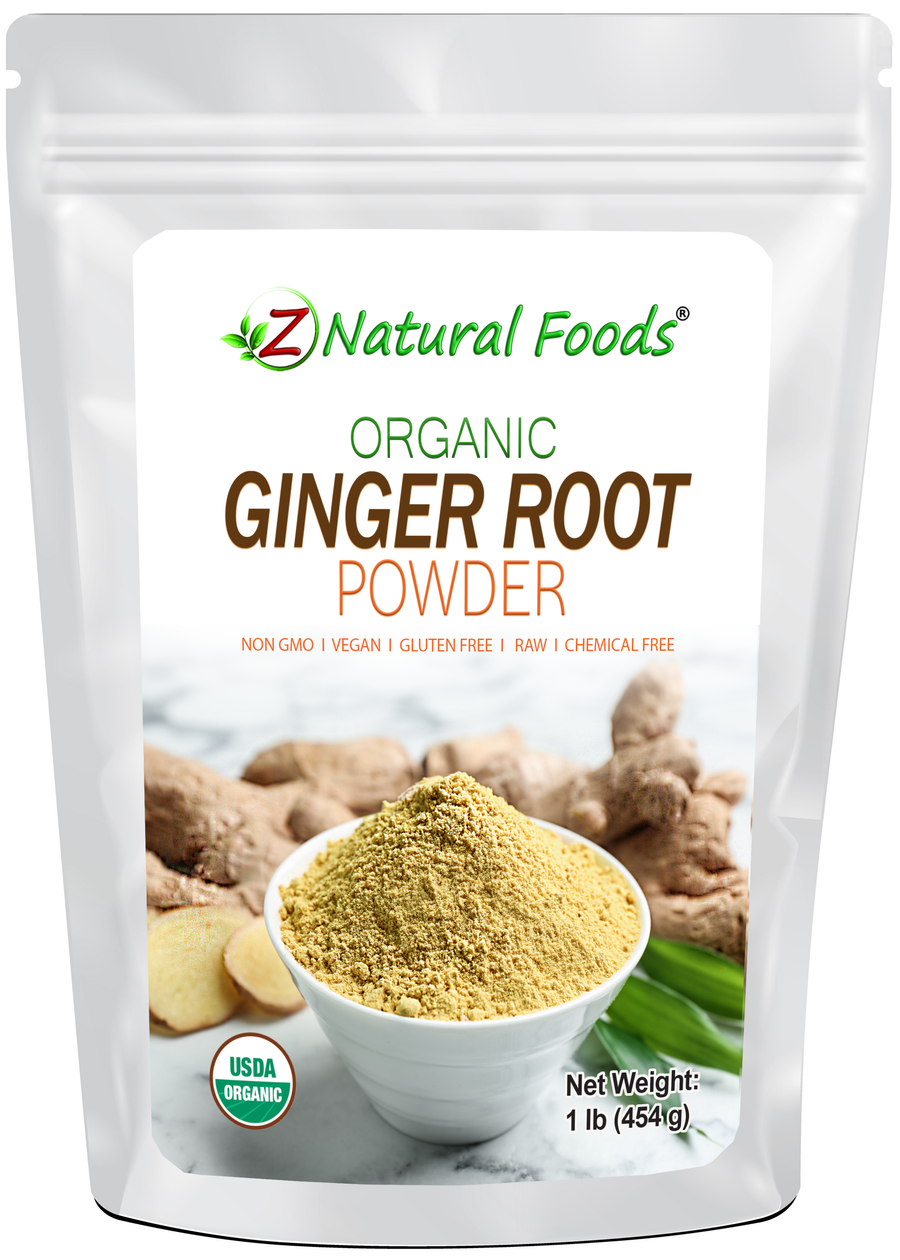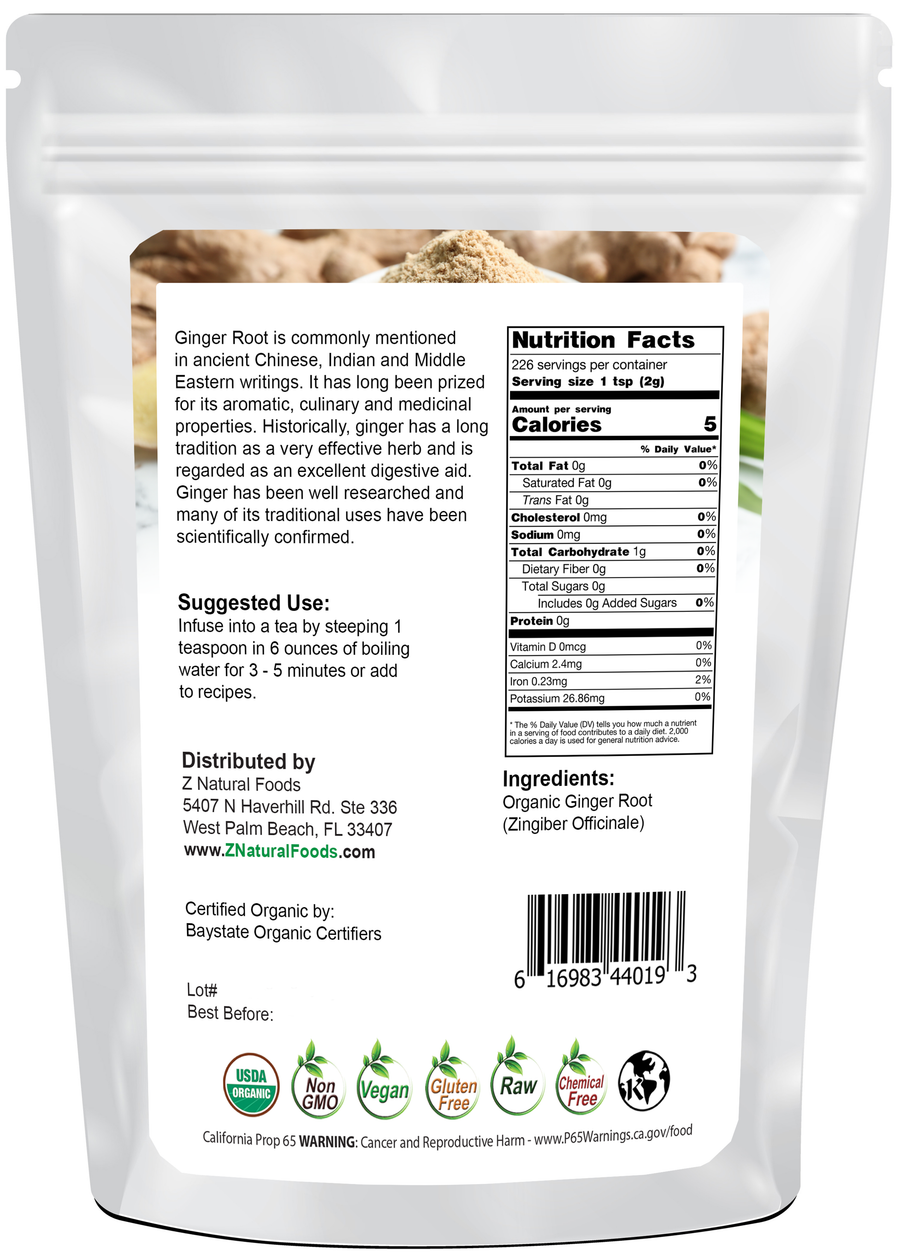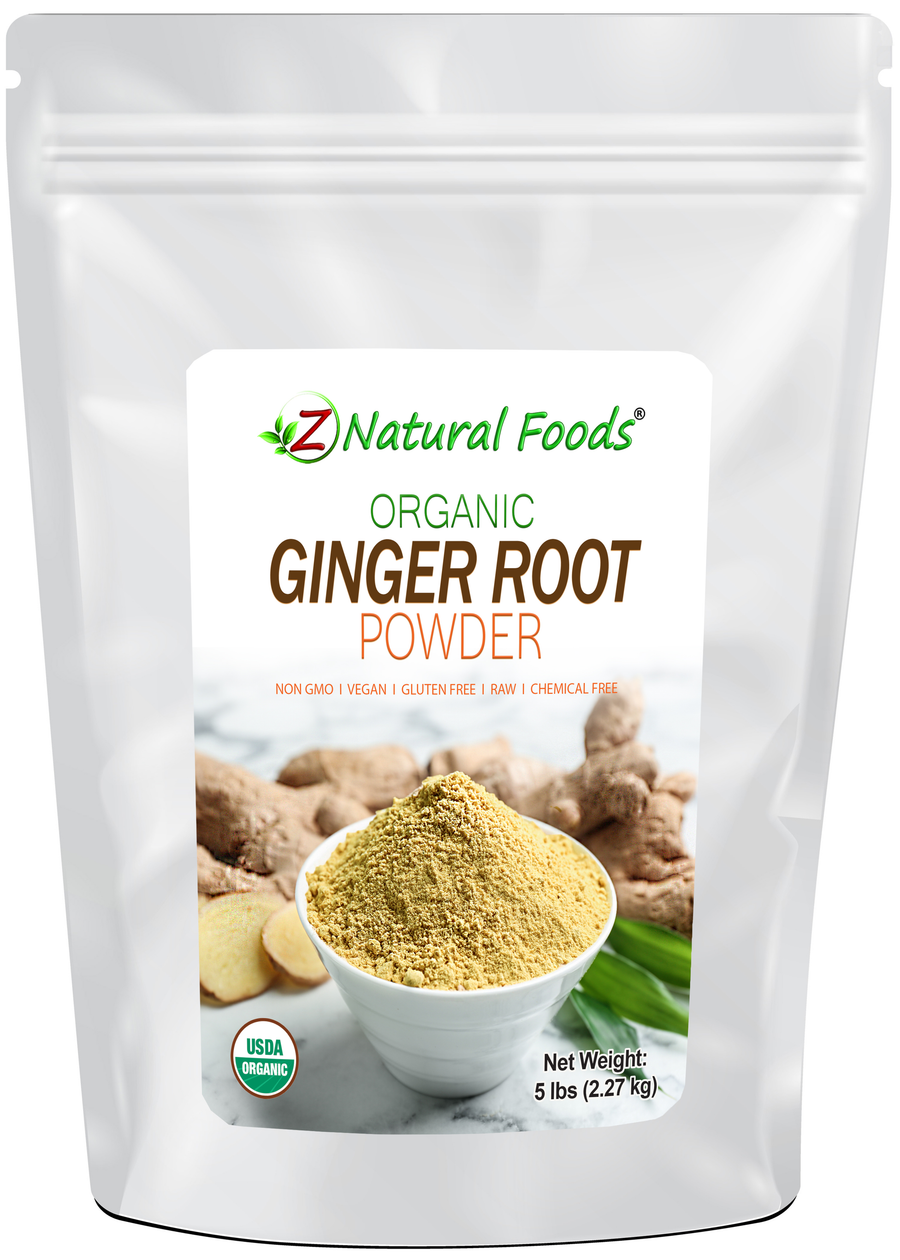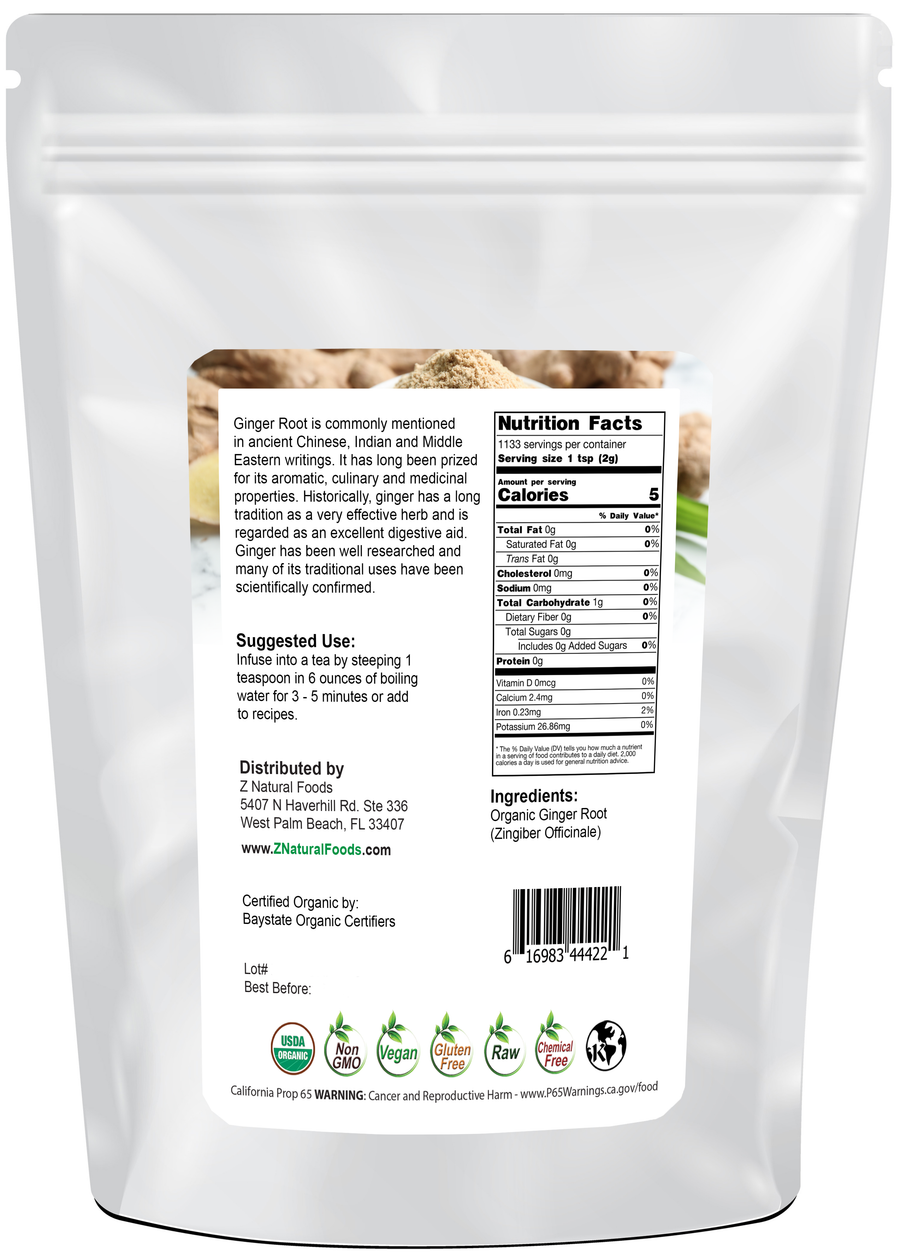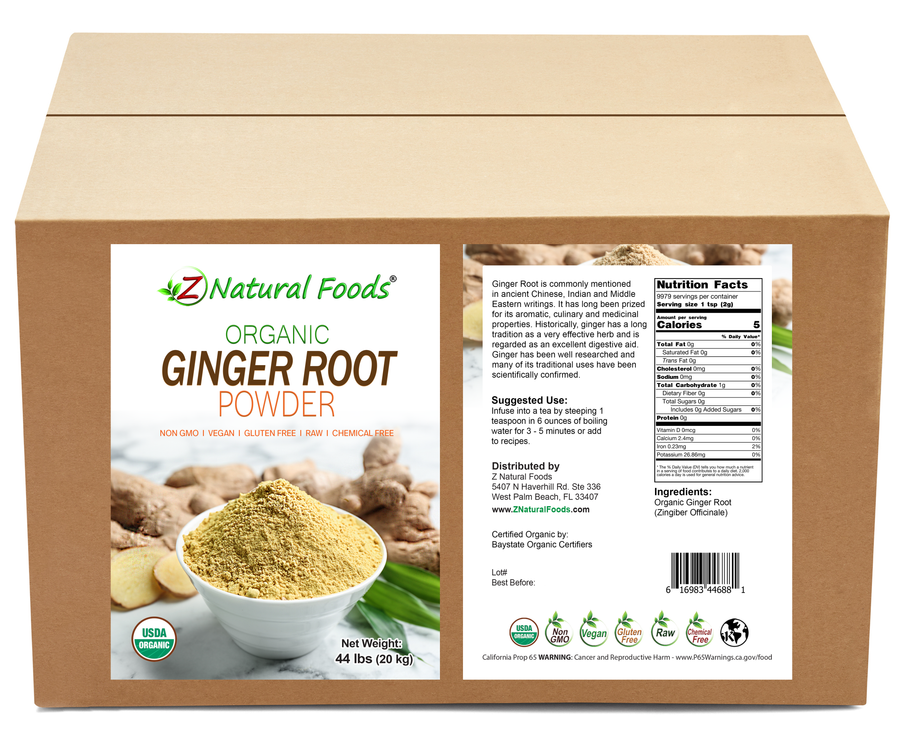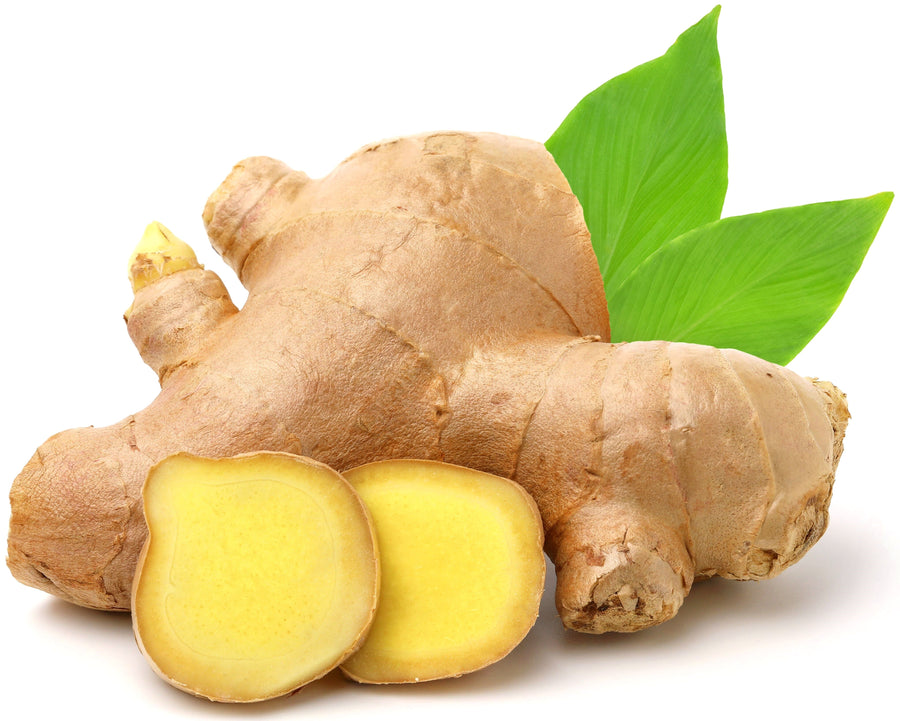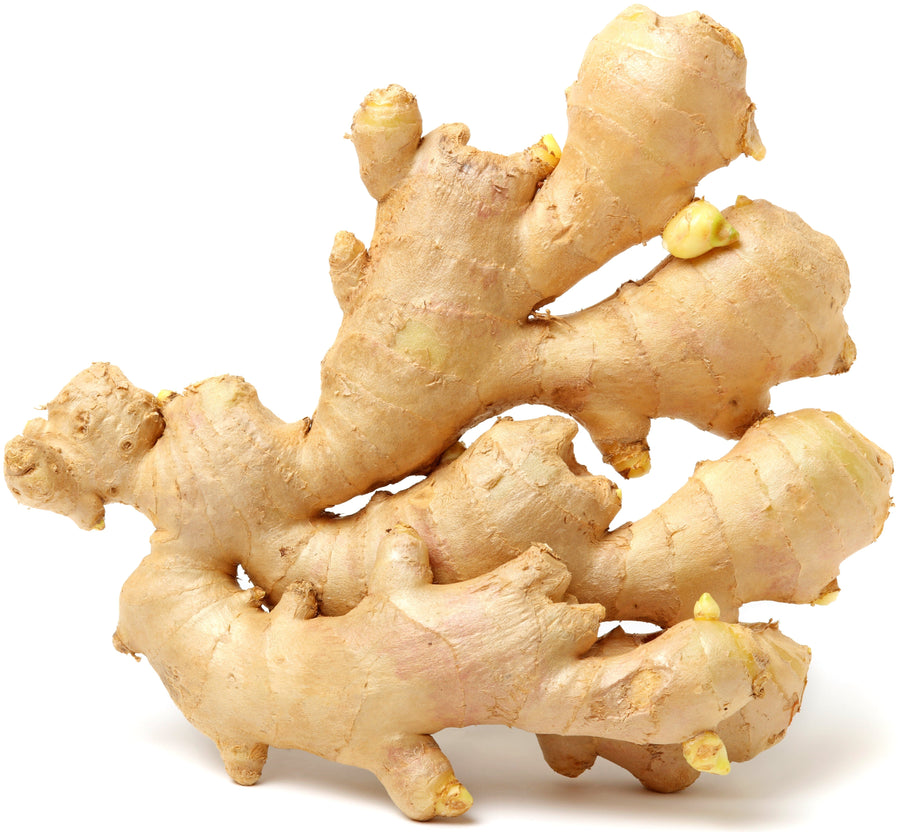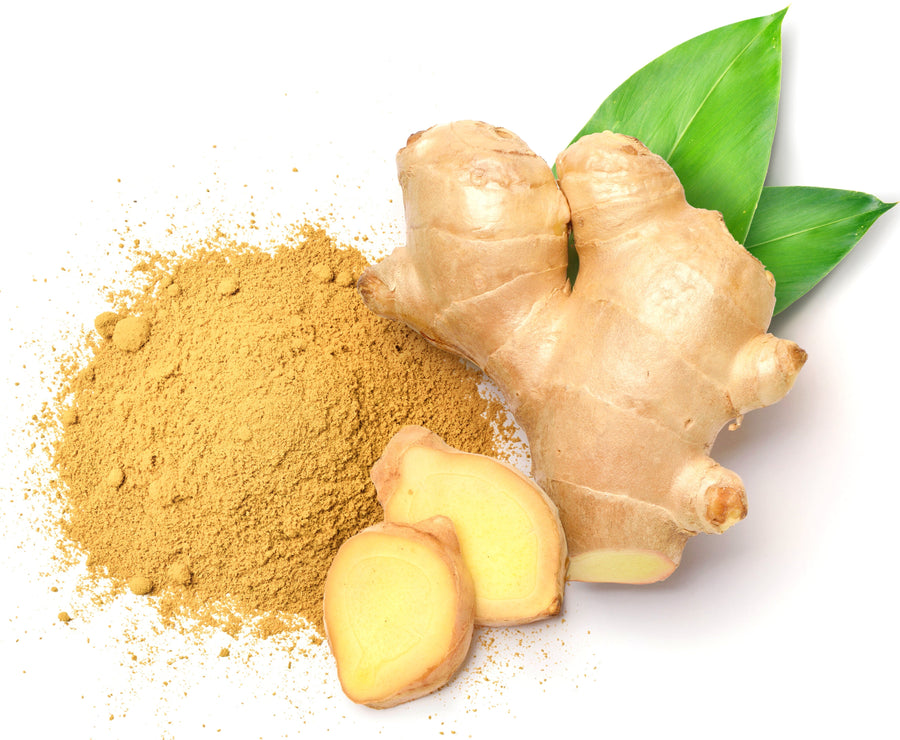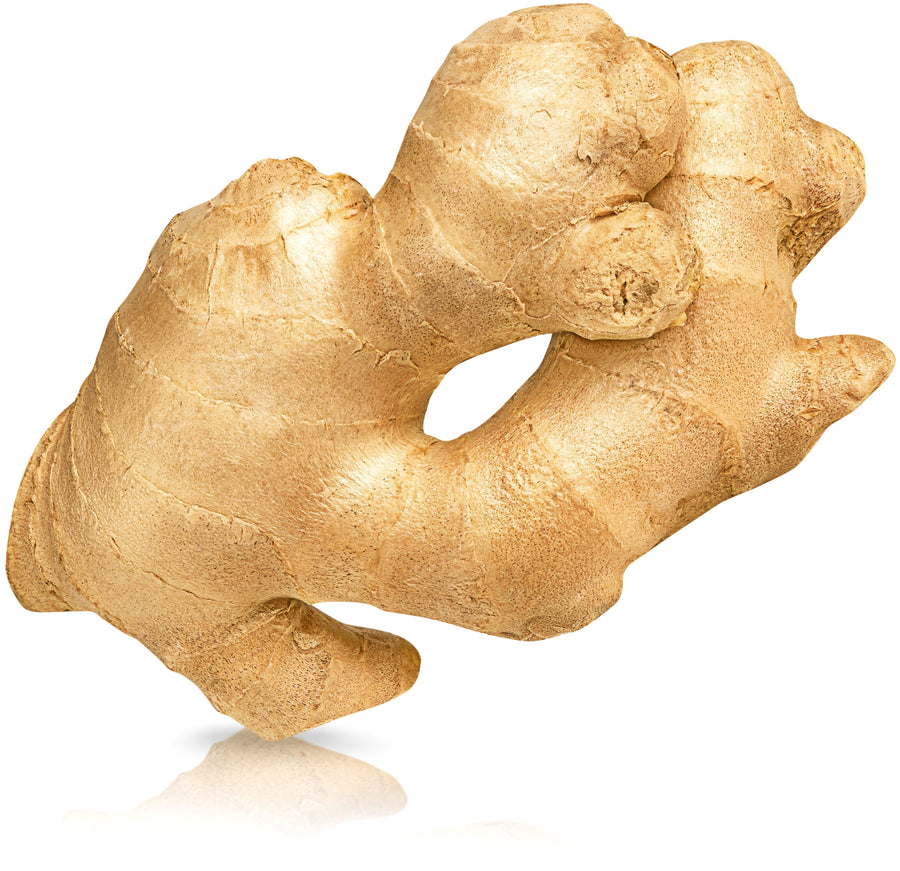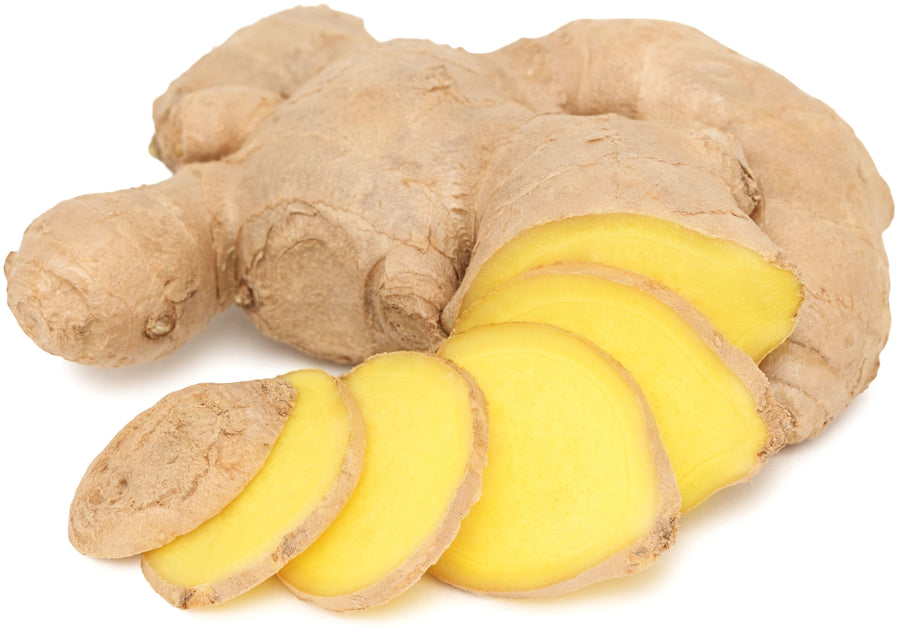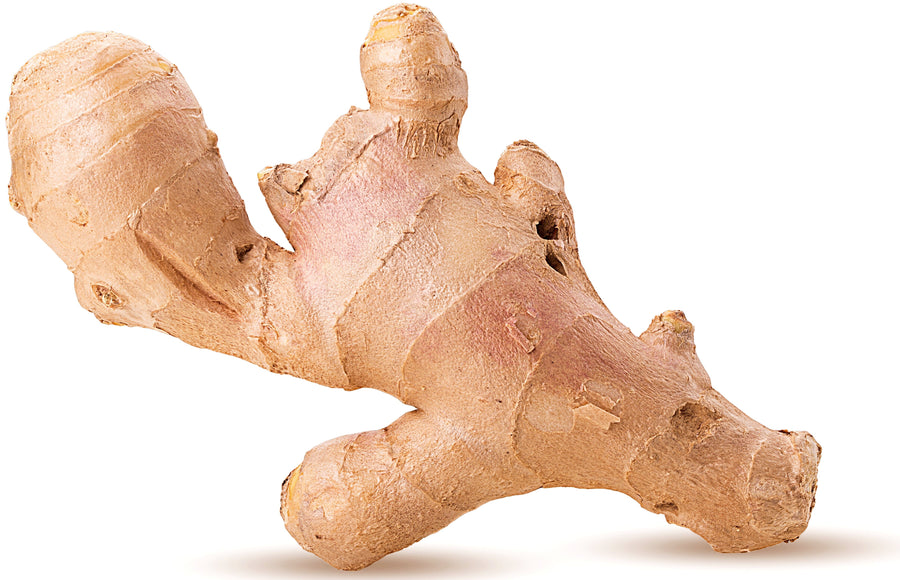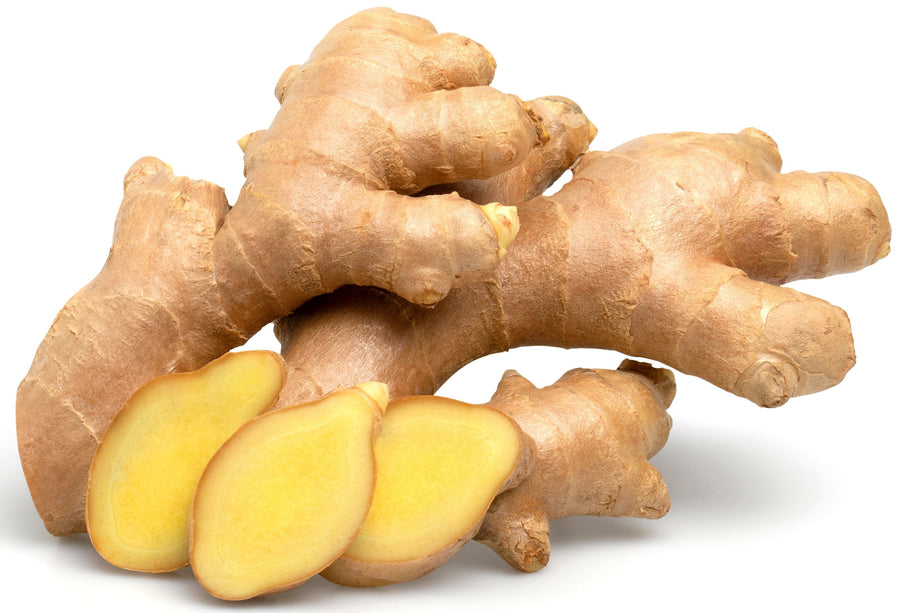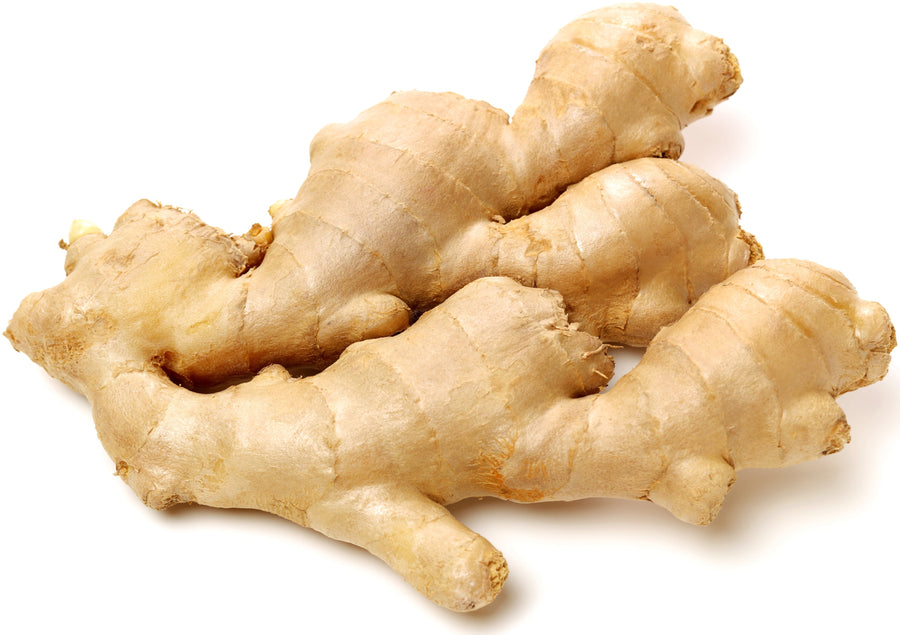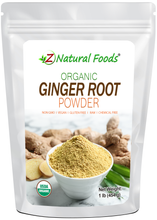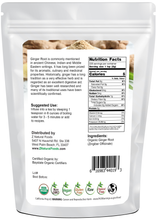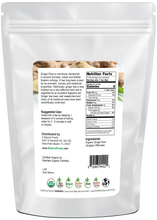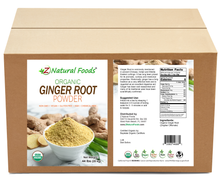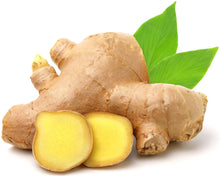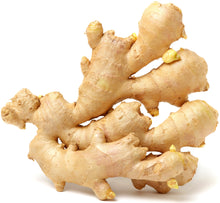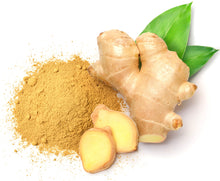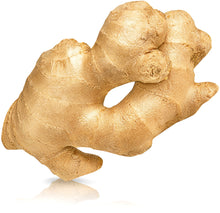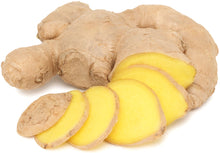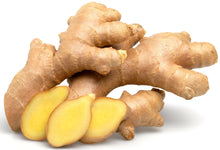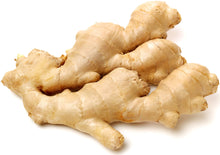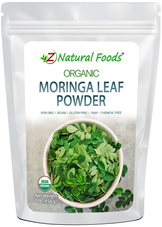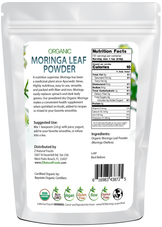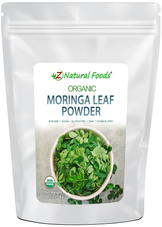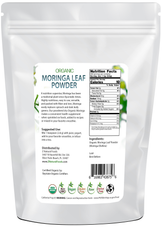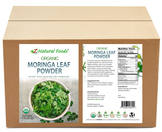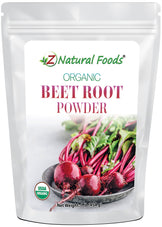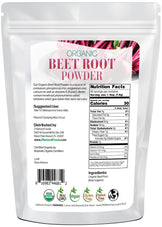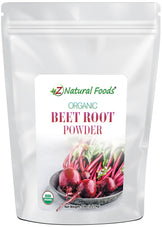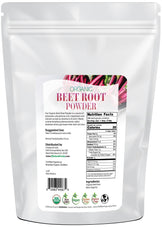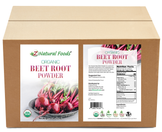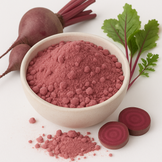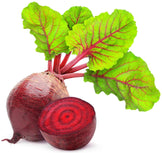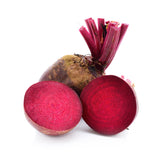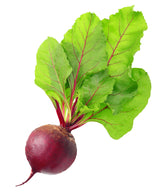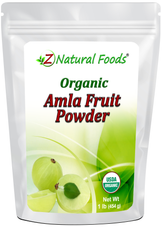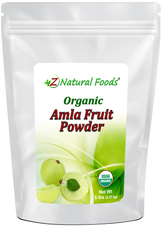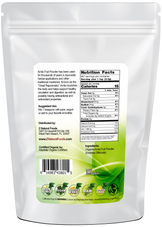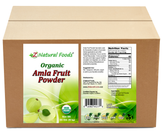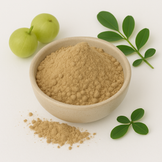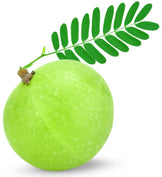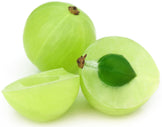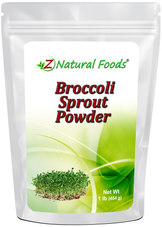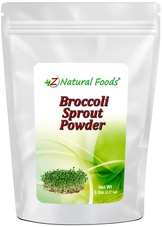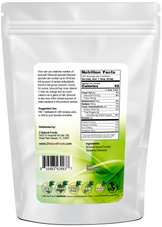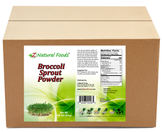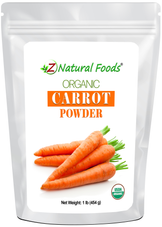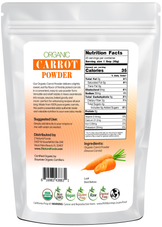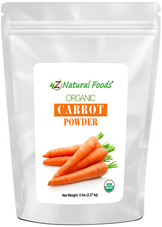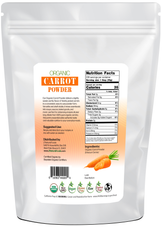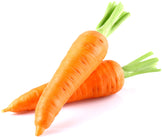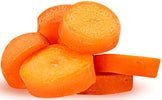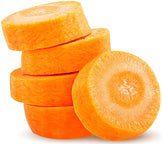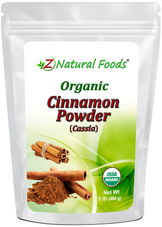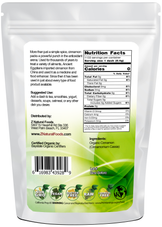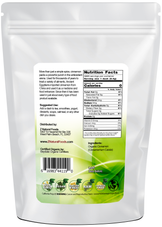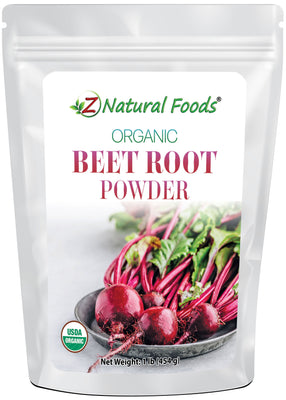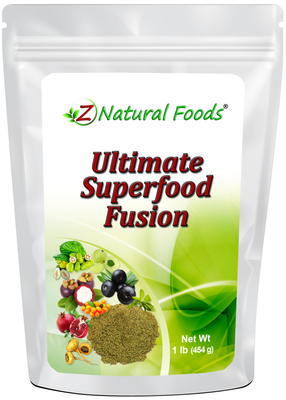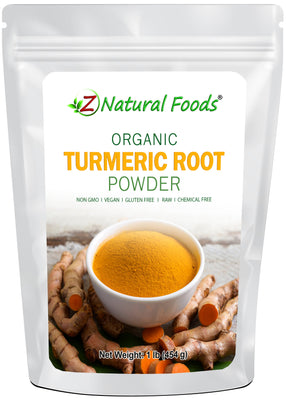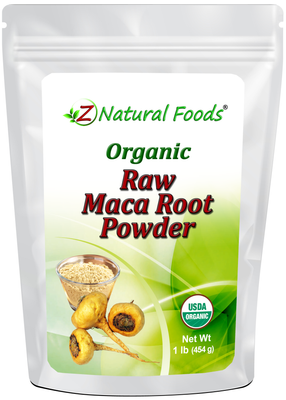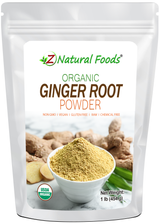About Product
Organic Ginger Root Powder is made from the dried root of the ginger plant, offering a warm, spicy-sweet flavor with a zesty aroma. This finely ground spice is a staple in cuisines worldwide, adding depth to curries, soups, marinades, baked goods, and teas.
Versatile and shelf-stable, it blends smoothly into both sweet and savory recipes. From spiced cookies and cakes to stir-fries and beverages, organic ginger root powder is a flavorful addition to any pantry.
Minerals: Magnesium, Phosphorus, Zinc, Copper, Manganese, Selenium
Suggested Use: 1 teaspoon daily.
Other preparations:
- Decoction: Use the ratio of 1 tablespoon of herb for every 10 ounces of water. Put all ingredients into a pot and bring to a boil. Once boiling, cover & lower to a simmer for 20-30 minutes. Turn the heat off and allow the mixture to sit for another 10 minutes. Strain and serve (this method is specific for barks and roots).
- Tincture: This method can take 15 to 30 days. You will need three items (a mason jar with a cover, the herb/herbs of your choice, and liquid for extracting). The extracting liquid can be alcohol, alcohol/ water combo, vinegar, or vegetable glycerin. Take the product and fill the jar ¾ full, add the liquid of your choice, and close the jar. Then shake the jar, so everything is well mixed. Give the jar a good 5-minute shake several times a day. After 15 to 30 days, strain and bottle in glass tincture jars.
Mixing suggestions: To increase flavor and nutritional profile, combine with our Organic Turmeric Root Powder.
Miscellaneous Facts about our Ginger Root Powder
Ingredients: Organic Ginger Root.
Parts Used: Raw Root.
Botanical Name: Zingiber officinale
Other Names: Black ginger, Canton ginger, Cochin ginger, Common ginger, Garden ginger, Gingembre, Imber, Jamaican ginger, Jengibre
Origin: Grown and harvested in Peru and packaged with care in Florida, USA.
Warning: Not to be used during pregnancy.
How to Maintain Optimum Freshness
- This product is packaged in airtight stand-up, resealable foil pouches for optimum freshness.
- Once opened, push the air out of the pouch before resealing it to preserve maximum potency.
- Keep your powder in a cool, dark, dry place.
This product is 100% natural and minimally processed:
Taste, smell, texture, and color vary from batch to batch. Go here to learn why our products may naturally vary.
The important protections we take to bring you safe and nutritious superfoods:
Please go here to discover the essential steps we take to deliver fresh, quality nutrition.
Bulk Quantities?
Need to order a large quantity of our products? We are happy to help! Please get in touch with our Bulk department to discuss the details.
* Product packaging, pictures, and origin may vary.
Sources & References
1. Fischer-Rasmussen W, Kjaer SK, Dahl C, Asping U. Ginger treatment of hyperemesis gravidarum. Eur J Obstet Gynecol Reprod Biol 1991;38:19"“24.
2. Borrelli F, Capasso R, Aviello G, et al. Effectiveness and safety of ginger in the treatment of pregnancy-induced nausea and vomiting. Obstet Gynecol 2005;105:849"“56.
3. Fulder S, Tenne M. Ginger as an anti-nausea remedy in pregnancy and the issue of safety. HerbalGram 1996;38:47"“50.
4. Mowrey DB, Clayson DE. Motion sickness, ginger, and psychophysics. Lancet 1982;1:655"“7.
5. Grontved A, Brask T, Kambskard J, et al. Ginger root against seasickness. Acta Otolaryngol 1988;105:45"“9.
6. Ribenfeld D, Borzone L. Randomized double-blind study comparing ginger (Zintona®) with dimenhydrinate in motion sickness. Healthnotes Rev Complementary Integrative Med 1999;6:98"“101.
7. Careddu P. Motion sickness in children: results of a double-blind study with ginger (Zintona®) and dimenhydrinate. Healthnotes Rev Complementary Integrative Med 1999;6:102"“7.
8. Stewart JJ, Wood MJ, Wood CD, Mims ME. Effects of ginger on motion sickness susceptibility and gastric function. Pharmacology 1991;42:111"“20.
9. Holtmann S, Clarke AH, Scherer H, et al. The anti-motion sickness mechanism of ginger. Acta Otolaryngol 1989;108:168"“74.
10. Grontved A, Hentzer E. Vertigo-reducing effect of ginger root. ORL 1986;48:282.
11. Srivastava KC, Mustafa T. Ginger (Zingiber officinale) in rheumatism and musculoskeletal disorders. Med Hypotheses 1992;39:342"“8.
12. Bliddal H, Rosetzsky A, Schlichting P, et al. A randomized, placebo-controlled crossover study of ginger extracts and ibuprofen in osteoarthritis. Osteoarthritis Cartilage 2000;8:9"“12.
13. Altman RD, Marcussen KC. Effects of a ginger extract on knee pain in patients with osteoarthritis. Arthritis Rheum 2001;44:2531"“8.
14. Yarnell EY, Abascal K. An herbal formula for treating intractable epilepsy: a review of the literature. Alt Compl Ther 2000;6:203"“6 [review].
15. Narita Y, Satowa H, Kokubu T, et al. Treatment of epileptic patients with the Chinese herbal medicine "saiko-keishi-to" (SK). IRCS Med Sci 1982;10:88"“9.
16. Nagakubo S, Niwa S-I, Kumagai N, et al. Effects of TJ-960 on Sternberg's paradigm results in epileptic patients. Jpn J Psych Neur 1993;47:609"“19.
17. Hirayama C, Okumura M, Tanikawa K, et al. A multicenter randomized controlled clinical trial of Shosaiko-to in chronic active hepatitis. Gastroent Jap 1989;24:715"“9.
18. Fujiwara K, Ohta Y, Ogata I, et al. Treatment trial of traditional Oriental medicine in chronic viral hepatitis. In: Ohta Y (ed) New Trends in Peptic Ulcer and Chronic Hepatitis: Part II. Chronic Hepatitis. Tokyo: Excerpta Medica, 1987, 141"“6.
19. Tajiri H, Kozaiwa K, Osaki Y, et al. The study of the effect of sho-saiko-to on HBeAg clearance in children with chronic HBV infection and with abnormal liver function tests. Acta Paediatr Jpn 1991;94:1811"“5.
20. Gibo Y, Nakamura Y, Takahashi N, et al. Clinical study of sho-saiko-to therapy for Japanese patients with chronic hepatitis C (CH-C). Prog Med 1994;14:217"“9.
21. Gibo Y, Nakamura Y, Takahashi N, et al. Clinical study of sho-saiko-to therapy for Japanese patients with chronic hepatitis C (CH-C). Prog Med 1994;14:217"“9.
22. Oka H, Yamamoto S, Kuroki T, et al. Prospective study of chemoprevention of hepatocellular carcinoma with sho-saiko-to (TJ-9). Cancer 1995;76:743"“9.
23. Mizushima Y, Oosaki R, Kobayashi M. Clinical features of pneumonitis induced by herbal drugs. Phytother Res 1997;11:295"“8.
24. Forster HB, Niklas H, Lutz S. Antispasmodic effects of some medicinal plants. Planta Med 1980;40:303"“19.
25. Blumenthal M, Busse WR, Goldberg A, et al. (eds). The Complete German Commission E Monographs: Therapeutic Guide to Herbal Medicines. Austin: American Botanical Council and Boston: Integrative Medicine Communications, 1998, 425"“6.
26. Weiss RF. Herbal Medicine. Beaconsfield, UK: Beaconsfield Publishers Ltd, 1988, 185"“6.
27. Blumenthal M, Busse WR, Goldberg A, et al. (eds). The Complete German Commission E Monographs: Therapeutic Guide to Herbal Medicines. Austin: American Botanical Council and Boston: Integrative Medicine Communications, 1998, 198.
28. Micklefield GH, Redeker Y, Meister V, et al. Effects of ginger on gastroduodenal motility. Int J Clin Pharmacol Ther 1999;37:341"“6.
29. Yamamoto M, Oka H, Kanno T, et al. Controlled prospective trial to evaluate sho-saiko-to for the prevention of hepatotcellular carcinoma in patients with cirrhosis of the liver. Gan To Kagaku Ryoho (Jpn J Cancer Chemother) 1989;16:1519"“24 [in Japanese].
30. Norred CL, Zamudio S, Palmer SK. Use of complementary and alternative medicines by surgical patients. AANA J 2000;68:13"“8.
31. Murphy JM. Preoperative considerations with herbal medicines. AORN J 1999;69:173"“5, 177"“8, 180"“3.
32. Robb-Nicholson C. By the way, doctor. My surgeon advised me to stop taking gingko biloba before my hip surgery. Can you explain why? Are there any other herbs I should avoid? Harv Womens Health Watch 2000;7:8.
33. Phillips S, Ruggier R, Hutchinson SE. Zingiber officinale (ginger)"”an antiemetic for day case surgery. Anaesthesia 1993;48:715"“7.
34. Bone ME, Wilkinson DJ, Young JR, et al. Ginger root"”a new antiemetic. The effect of ginger root on the postoperative nausea and vomiting after major gynaecological surgery. Anaesthesia 1990;45:669"“71.
35. Visalyaputra S, Petchpaisit N, Somcharoen K, Choavaratana R. The efficacy of ginger root in the prevention of postoperative nausea and vomiting after outpatient gynaecological laparoscopy. Anaesthesia 1998;53:506"“10.
36. Arfeen Z, Owen H, Plummer JL, et al. A double-blind randomized controlled trial of ginger for the prevention of postoperative nausea and vomiting. Anaesth Intensive Care 1995;23:449"“52.
37. Ernst E, Pittler MH. Efficacy of ginger for nausea and vomiting: a systematic review of randomized clinical trials. Br J Anaesth 2000;84:367"“71 [review].
38. Chaiyakunapruk N, Kitikannakorn N, Nathisuwan S, et al. The efficacy of ginger for the prevention of postoperative nausea and vomiting: a meta-analysis. Am J Obstet Gynecol2006;194:95"“9.
39. Grontved A, Hentzer E. Vertigo-reducing effect of ginger root. A controlled clinical study. ORL J Otorhinolaryngol Relat Spec 1986;48:282"“6.
40. Grontved A, Brask T, Kambskard J, Hentzer E. Ginger root against sea sickness. A controlled trial in the open sea. Acta Otolarygol 1988;105:45"“9.
41. Bordia A, Verma SK, Srivastava KC. Effect of ginger (Zingiber officinale Rosc) and fenugreek (Trigonella foenumgraceum L) on blood lipids, blood sugar, and platelet aggregation in patients with coronary artery disease. Prostagland Leukotrienes Essential Fatty Acids 1997;56:379"“84.
42. Lumb AB. Effect of dried ginger on human platelet function. Thromb Haemost 1994;7:110"“1.
43. Janssen PL, Meyboom S, van Staveren WA, et al. Consumption of ginger (Zingiber officinale Roscoe) does not affect ex vivo platelet thromboxane production in humans. Eur J Clin Nutr 1996;50:772"“4.
44. Baba S, Takasaka T. Double-blind clinical trial of sho-seiryu-to (TJ-19) for perennial nasal allergy. Clin Otolaryngol 1995;88:389"“405.
45. Inada Y, Watanabe K, Kamiyama M, et al. In vitro immunomodulatory effects of traditional Kampo medicine (sho-saiko-to: SST) on peripheral mononuclear cells in patients with AIDS. Biomed Pharmacother 1990;44:17"“9.
46. Piras G, Makino M, Baba M. Sho-saiko-to, a traditional kampo medicine, enhances the anti-HIV-1 activity of lamivudine (3TC) in vitro. Microbiol Immunol 1997;41:435"“9.
47. Fujimaki M, Hada M, Ikematsu S, et al. Clinical efficacy of two kinds of kampo medicine on HIV infected patients. Int Conf AIDS 1989;5:400 [abstract no. W.B.P.292].
48. Li BQ, Fu T, Yan YD, et al. Inhibition of HIV infection by baicalin"”a flavonoid compound purified from Chinese herbal medicine. Cell Mol Biol Res 1993;39:119"“24.
49. Westphal J, Hörning M, Leonhardt K. Phytotherapy in functional abdominal complaints: Results of a clinical study with a preparation of several plants. Phytomedicine 1996;2:285"“91.
50. Mustafa T, Srivastava KC. Ginger (Zingiber officinale) in migraine headache. J Ethnopharmacol 1990;29:267"“73.
51. Srivastava KC, Mustafa T. Ginger (Zingiber officinale) in rheumatism and musculoskeletal disorders. Med Hypoth 1992;39:342"“8.
52. Chopra A, Lavin P, Patwardhan B, Chitre D. Randomized double blind trial of an Ayurvedic plant derived formulation for treatment of rheumatoid arthritis. J Rheumatol 2000;27:1365"“72.
53. Tyler VE. Herbs of Choice: The Therapeutic Use of Phytomedicinals. Binghamton, NY: Pharmaceutical Products Press, 1994, 39"“42.
54. Holtmann S, Clarke AH, Scherer H, Hohn M. The anti-motion sickness mechanism of ginger. A comparative study with placebo and dimenhydrinate. Acta Otolaryngol (Stockh) 1989;108:168"“74.
55. Grontved A, Brask T, Kambskard J, Hentzer E. Ginger root against seasickness. Acta Otolaryngol 1988;105:45"“9.
56. Ribenfeld D, Borzone L. Randomized double-blind study comparing ginger (Zintona®) with dimenhydrinate in motion sickness. Healthnotes Rev Complementary Integrative Med 1999;6:98"“101.
57. Careddu P. Motion sickness in children: Results of a double-blind study with ginger (Zintona®) and dimenhydrinate. Healthnotes Rev Complementary Integrative Med 1999;6:102"“7.
58. Bone ME, Wilkinson DJ, Young JR, et al. Ginger root"”a new antiemetic: The effect of ginger root on postoperative nausea and vomiting after major gynaecological surgery. Anaesthesia 1990;45:669"“71.
59. Phillips S, Ruggier R, Hutchingson SE. Zingiber officinale (ginger)"”an antiemetic for day case surgery. Anaesthesia 1993;48:715"“7.
60. Arfeen Z, Owen H, Plummer JL, et al. A double-blind randomized controlled trial of ginger for the prevention of postoperative nausea and vomiting. Anaesthesia 1995;23:449"“52.
61. Meyer K, Schwartz J, Craer D, Keyes B. Zingiber officinale (ginger) used to prevent 8-Mop associated nausea. Dermatol Nursing 1995;7:242"“4.
62. Langner E, Greifenberg S, Gruenwald J. Ginger: History and use. Adv Ther 1998;15:25"“44 [review].
63. Bradley PR (ed). British Herbal Compendium, vol 1. Bournemouth, Dorset, UK: British Herbal Medicine Association, 1992, 112"“4.
64. Yamahara J, Huang QR, Li YH, et al. Gastrointestinal motility enhancing effect of ginger and its active constituents. Chem Pharm Bull 1990;38:430"“1.
65. al-Yahya MA, Rafatullah S, Mossa JS, et al. Gastroprotective activity of ginger in albino rats. Am J Chinese Med 1989;17:51"“6.
66. Bordia A, Verma SK, Srivastava KC. Effect of ginger (Zingiber officinale Rosc) and fenugreek (Trigonella foenumgraecum L) on blood lipids, blood sugar, and platelet aggregation in patients with coronary artery disease. Prostagland Leukotrienes Essential Fatty Acids 1997;56:379"“84.
67. Verma SK, Singh J, Khamesra R, Bordia A. Effect of ginger on platelet aggregation in man. Indian J Med Res 1994;98:240"“2.
68. Lumb AB. Effect of dried ginger on human platelet function. Thromb Haemost 1994;7:110"“1.
69. Janssen PL, Meyboom S, van Staveren WA, et al. Consumption of ginger (Zingiber officinale Roscoe) does not affect ex vivo platelet thromboxane production in humans. Eur J Clin Nutr 1996;50:772"“4.
70. Brown DJ. Herbal Prescriptions for Better Health. Rocklin, CA: Prima Publishing, 1996, 111"“8.
71. Blumenthal M, Busse WR, Goldberg A, et al. (eds). The Complete Commission E Monographs: Therapeutic Guide to Herbal Medicines. Boston, MA: Integrative Medicine Communications, 1998, 135"“6.
72. Micklefield GH, Redeker Y, Meister V, et al. Effects of ginger on gastroduodenal motility. Int J Clin Pharmacol Ther 1999;37(7):341-6.
73. Phillips S, Ruggier R, Hutchinson SE. Zingiber officinale (ginger)-an antiemetic for day case surgery. Anaesthesia 1993;48(8):715-7.
74. Blumenthal M, editor. The Complete German Commission E Monographs: Therapeutic Guide to Herbal Medicines. Trans. S. Klein. Boston, MA: American Botanical Council, 1998.
75. Newall CA, Anderson LA, Philpson JD. Herbal Medicine: A Guide for Healthcare Professionals. London, UK: The Pharmaceutical Press, 1996.
76. Foster S, Tyler VE. Tyler's Honest Herbal: A Sensible Guide to the Use of Herbs and Related Remedies. 3rd ed., Binghamton, NY: Haworth Herbal Press, 1993.
77. The Review of Natural Products by Facts and Comparisons. St. Louis, MO: Wolters Kluwer Co., 1999.
78. Leung AY, Foster S. Encyclopedia of Common Natural Ingredients Used in Food, Drugs and Cosmetics. 2nd ed. New York, NY: John Wiley & Sons, 1996.
79. McGuffin M, et al, ed. American Herbal Products Association's Botanical Safety Handbook. Boca Raton, FL: CRC Press, 1997.
80. Gruenwald J, et al. PDR for Herbal Medicines. 1st ed. Montvale, NJ: Medical Economics Company, Inc., 1998.
81. Schechter JO. Treatment of disequilibrium and nausea in the SRI discontinuation syndrome. J Clin Psychiatry 1998;59(8):431-2.
82. Fischer-Rasmussen W, Kjaer SK, Dahl C, Asping U. Ginger treatment of hyperemesis gravidarum. Eur J Obstet Gynecol Reprod Biol 1991;38(1):19-24.
83. Visalyaputra S, Petchpaisit N, Somcharoen K, Choavaratana R. The efficacy of ginger root in the prevention of postoperative nausea and vomiting after outpatient gynaecological laparoscopy. Anaesthesia 1998;53(5):506-10.
84. Bone ME, et al. Ginger root-a new antiemetic. The effect of ginger root on postoperative nausea and vomiting after major gynaecological surgery. Anaesthesia 1990;45(8):669-71.
85. Ernst E, Pittler MH. Efficacy of ginger for nausea and vomiting: a systematic review of randomized clinical trials. Br J Anaesth 2000;84:367-71.
86. Anon. Case problem: presenting conventional and complementary approaches for relieving nausea in a breast cancer patient undergoing chemotherapy. J Am Diet Assoc 2000;100(2):257-9.
87. Wilkinson JM. What do we know about herbal morning sickness treatments? A literature survey. Midwifery 2000;16(3):224-8.
88. Jewell D, Young G. Interventions for nausea and vomiting in early pregnancy. Cochrane Database Syst Rev 2000;(2):CD000145.
89. Lumb AB. Mechanism of antiemetic effect of ginger. Anaesthesia 1993;48(12):1118.
90. Arfeen Z, Owen H, Plummer JL, et al. A double-blind randomized controlled trial of ginger for the prevention of postoperative nausea and vomiting. Anaesth Intensive Care 1995;23(4):449-52.
91. Brinker F. Herb Contraindications and Drug Interactions. 2nd ed. Sandy, OR: Eclectic Medical Publications, 1998.
92. "Zingiber officinale information from NPGS/GRIN". ars-grin.gov. Retrieved 3 March 2008.
93. "Spices: Exotic Flavors & Medicines: Ginger". Retrieved 8 August 2007.
94. "ginger". Online Etymology Dictionary, http://www.etymonline.com/. Retrieved 22 January 2011.
95. "Medicinal and Poisonous Plants of Southern and Eastern Africa" - Watt & Brandwijk
96. Ginger n Oxford Dictionary of English
97. "All about ginger at All Things Ginger". Allthingsginger.co.uk. Retrieved 25 April 2012.
98. Glorious Ginger: Root out Ailments with this Ancient Spice published by thefoodpaper.com
99. Antioxidant activity of a ginger extract published by [1]
100. "ìƒê°•ì°¨ ginger tea 生薑茶" (in Korean). Doosan Encyclopedia. Retrieved 23 October 2009.
101. "Japanese Cold Remedies". Japanesefood.about.com. 9 April 2012. Retrieved 25 April 2012.
102. "Plain Ginger Tea". Buzzle.com. Retrieved 25 April 2012.
103. Identification of serotonin 5-HT1A receptor partial agonists in ginger. Nievergelt A. Huonker P. Schoop R. Altmann KH. Gertsch J. Bioorganic & Medicinal Chemistry. 18(9):3345-51, 2010 May 01
104. a b http://medind.nic.in/ibi/t03/i1/ibit03i1p32.pdf
105. a b Ernst, E.; & Pittler, M.H. (1 March 2000). "Efficacy of ginger for nausea and vomiting: a systematic review of randomized clinical trials" (PDF). British Journal of Anesthesia 84 (3): 367"“371. PMID 10793599. Retrieved 6 September 2006.
106. Wood, C.; Pittler, MH (2000). "Comparison of efficacy of ginger with various antimotion sickness drugs". British journal of anaesthesia 84 (3): 367"“71. PMID 10793599.
107. Grøntved, A.; Pittler, MH (2000). "Ginger root against seasickness. A controlled trial on the open sea". British journal of anaesthesia 84 (3): 367"“71. PMID 10793599.
108. a b c University of Maryland Medical Centre (2006). "Ginger". Retrieved 2 August 2007.
109. Antiglycating potential of Zingiber officinalis and delay of diabetic cataract in rats. Saraswat M. Suryanarayana P. Reddy PY. Patil MA. Balakrishna N. Reddy GB. Molecular Vision. 16:1525"“37, 2010.
110. Al-Amin, Zainab M. et al.; Thomson, M; Al-Qattan, KK; Peltonen-Shalaby, R; Ali, M (2006). "Anti-diabetic and hypolipidaemic properties of ginger (Zingiber officinale) in streptozotocin-induced diabetic rats". British Journal of Nutrition (Cambridge University Press) 96 (4): 660"“666. doi:10.1079/BJN20061849. PMID 17010224. Retrieved 5 November 2007.
111. Afshari, Ali Taghizadeh et al.; Shirpoor, A; Farshid, A; Saadatian, R; Rasmi, Y; Saboory, E; Ilkhanizadeh, B; Allameh, A (2007). "The effect of ginger on diabetic nephropathy, plasma antioxidant capacity and lipid peroxidation in rats". Food Chemistry (Elsevier) 101 (1): 148"“153. doi:10.1016/j.foodchem.2006.01.013.
112. Chen, Jaw-Chyun; Li-Jiau Huang, Shih-Lu Wu, Sheng-Chu Kuo, Tin-Yun Ho, Chien-Yun Hsiang (2007). "Ginger and Its Bioactive Component Inhibit Enterotoxigenic Escherichia coli Heat-Labile Enterotoxin-Induced Diarrhoea in Mice". Journal of Agricultural and Food Chemistry 55 (21): 8390"“8397. doi:10.1021/jf071460f. PMID 17880155.
113. O'Hara, Mary; Kiefer, David; Farrell, Kim; Kemper, Kathi (1998). "A Review of 12 Commonly Used Medicinal Herbs". Archives of Family Medicine 7 (7): 523"“536. doi:10.1001/archfami.7.6.523. PMID 9821826.
114. Glorious Ginger: Root Out Ailments with This Ancient Spice published by thefoodpaper.com
115. Rhode, J.; Fogoros, S.; Zick, S.; Wahl, H.; Griffith, K. A.; Huang, J.; Liu, J. R. (2007). "Ginger inhibits cell growth and modulates angiogenic factors in ovarian cancer cells". BMC Complementary & Alternative Medicine 7: 44. doi:10.1186/1472-6882-7-44. PMC 2241638. PMID 18096028.
116. Kim, J. S.; et al., Sa Im; Park, Hye Won; Yang, Jae Heon; Shin, Tae-Yong; Kim, Youn-Chul; Baek, Nam-In; Kim, Sung-Hoon et al. (2008). "Cytotoxic components from the dried rhizomes of Zingiber officinale Roscoe". Archives of Pharmacal Research 31 (4): 415"“418. doi:10.1007/s12272-001-1172-y. PMID 18449496.
117. Choudhury, D.; et al., Amlan; Bhattacharya, Abhijit; Chakrabarti, Gopal (2010). "Aqueous extract of ginger shows antiproliferative activity through disruption of microtubule network of cancer cells". Food Chem Toxicol. 48 (10): 2872"“2880. doi:10.1016/j.fct.2010.07.020.
118. Oyagbemi, A. A.; Saba, A. B.; Azeez, O. I. (2010). "Molecular targets of [6]-gingerol: Its potential roles in cancer chemoprevention". Biofactors 36 (3): 169"“178. doi:10.1002/biof.78. PMID 20232343.
119. McGee, Harold (2004). On Food and Cooking: The Science and Lore of the Kitchen (2nd ed.). New York: Scribner. pp. 425"“426. ISBN 0-684-80001-2.
120. a b Al-Achi, Antoine. "A Current Look at Ginger Use". Retrieved 2 August 2007.
121. a b "Ginger NCCAM Herbs at a Glance". Nccam.nih.gov. Retrieved 25 April 2012.
122. Jakes, Susan (15 January 2007). "Beverage of Champions". Times on-line. Archived from the original on 1 July 2007. Retrieved 2 August 2007.
123. Hardon, Anita (2001). Applied health research manual: anthropology of health and health care. Het Spinhuis. ISBN 90-5589-191-6.
124. Taguba, Yvonne B. (1984). Common medicinal plants of the Cordillera region (Northern Luzon, Philippines). Community Health Education, Services and Training in the Cordillera Region (CHESTCORE).
125. "Traditional Japanese Cold Remedies". Pref.ibaraki.jp. 27 June 2008. Retrieved 25 April 2012.
126. MDidea Extracts Professional (2010). "Dosage and Administration of Ginger". Retrieved 3 October 2010.
127. a b c Mayo Clinic (1 May 2006). "Drugs & Supplements: Ginger (Zingiber officinale Roscoe)". Retrieved 2 August 2007.
128. "Taichung City: Nutrition products made with contaminated ginger powder seized "“ Taiwan News Online". Etaiwannews.com. 16 June 2011. Retrieved 25 April 2012.
129. http://www.ncbi.nlm.nih.gov/pubmed/3537898
130. http://www.ncbi.nlm.nih.gov/pubmed/23123794
131. http://articles.mercola.com/sites/articles/archive/2014/06/30/ginger-health-benefits.aspx
132. http://www.ncbi.nlm.nih.gov/pubmed/15453957
133. http://www.ncbi.nlm.nih.gov/pubmed/22235230
134. http://preventdisease.com/news/14/061614_10-Health-Benefits-of-Ginger-Tea.shtml
135. http://www.ncbi.nlm.nih.gov/pmc/articles/PMC3016669/?tool=pubmed
136. http://www.greenmedinfo.com/node/83545
137. http://www.greenmedinfo.com/blog/can-ginger-beat-out-multi-billion-dollar-acid-blockers
138. http://www.ncbi.nlm.nih.gov/pubmed/11710709
139. http://www.ncbi.nlm.nih.gov/pubmed/17695143
140. http://umm.edu/health/medical/altmed/herb/ginger
141. http://www.ncbi.nlm.nih.gov/pubmed/21818642
142. http://umm.edu/health/medical/altmed/herb/ginger
143. http://www.ncbi.nlm.nih.gov/pmc/articles/PMC3519348/
144. http://www.ncbi.nlm.nih.gov/pubmed/17066513
145. http://www.ncbi.nlm.nih.gov/pubmed/21849094
146. http://www.ncbi.nlm.nih.gov/pubmed/23657930
147. http://www.ncbi.nlm.nih.gov/pubmed/19216660
148. http://www.ncbi.nlm.nih.gov/pubmed/6440548
149. http://www.academicjournals.org/article/article1380017545_Sebiomo%20et%20al.pdf
150. http://www.ncbi.nlm.nih.gov/pubmed/23717759
151. http://www.ncbi.nlm.nih.gov/pmc/articles/PMC3010628/?tool=pubmed
152. http://www.ncbi.nlm.nih.gov/pubmed/21918995
153. http://www.indianjrheumatol.com/article/S0973-3698%2810%2960514-6/abstract
154. http://www.ncbi.nlm.nih.gov/pubmed/20142827
155. http://www.ncbi.nlm.nih.gov/pmc/articles/PMC3020385/?tool=pubmed
156. http://www.indianjrheumatol.com/article/S0973-3698(10)60514-6/abstract
157. http://www.greenmedinfo.com/substance/ginger
158. "ginger" A Dictionary of Food and Nutrition. Ed. David A. Bender. Oxford University Press 2009
* Reviews & Success Stories Disclaimer
Product reviews solely reflect the views and opinions expressed by the contributors and not those of Z Natural Foods. Z Natural Foods does not verify or endorse any claims made in these reviews. Statements have not been evaluated by the FDA and are not intended to diagnose, treat, cure, or prevent any disease or health condition.REFERRAL PROGRAM
Share your personal link to your friends and welcome them with rewards. Claim yours when they make their first purchase.

GIVE
$10 off discount

GET
$10 off discount
Other products in the same category
Beet Root Powder - Organic
£11.56
Ultimate Superfood Fusion
£25.61
